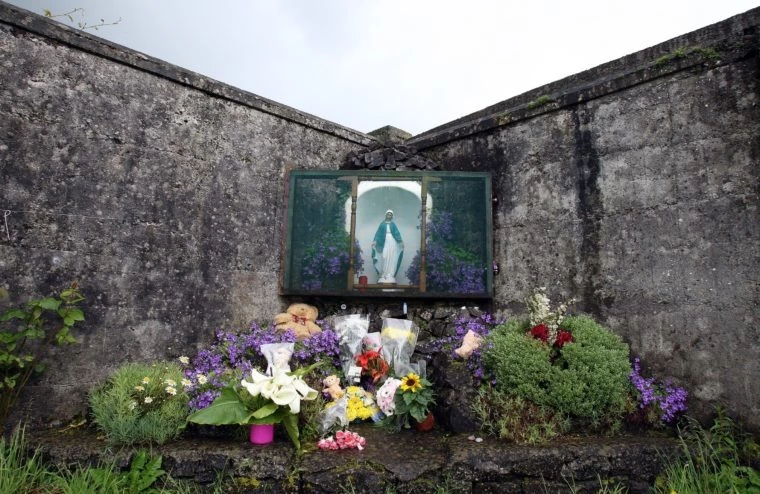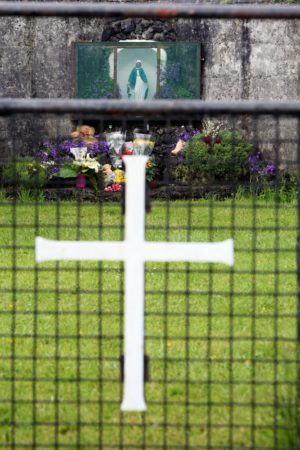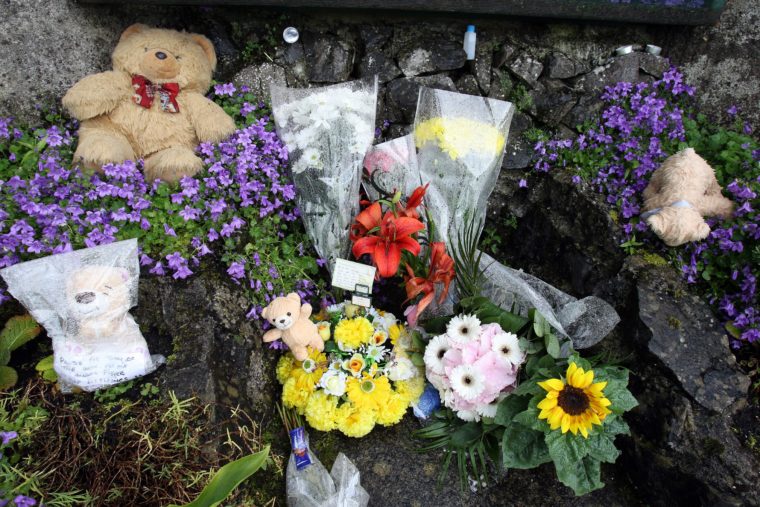Survivors of Ireland’s Notorious Homes for ‘fallen Women’ Where Babies Were ‘left to Die’ Speak out
By Katie Grant
The Bon Secours Mother and Baby Home is notorious for the hundreds of babies and children who died there. Katie Grant meets a group of former “Home Babies” who suffered unimaginable hardships and are determined to expose the truth about the church-run institutions Marie* beams with pride as she describes her two adult children. Unlike her, they were well-educated, could read and write by the time they started nursery and grew up showered with love and affection. Her joy is plain to see. But the 64-year-old Irish emigre has been keeping a secret their entire lives. Marie was born in the Bon Secours Mother and Baby Home, an institution for unmarried mothers, and suffered years of abuse at the convent-run orphanage where she resided. For decades Marie’s “impure” background was a source of enormous shame for her yet she yearned to be open with her children. In 2014, history caught up with her and the prospect of broaching the subject became unthinkable. “They love me so much that I think it would break their hearts,” she says. Bon Secours: nearly 800 dead Two years ago this month, an amateur historian went public with the terrible discovery she had made while researching Bon Secours, which operated in Tuam, Galway, between 1925 and 1961. Almost 800 babies and children had died at the home during that period, Catherine Corless revealed. Denied headstones and coffins, all the babies and children were interred in unconsecrated ground next to the home, she said. Her findings sent shock waves across Ireland. In one year the equivalent of one baby or child died every week A local woman, Ms Corless had been compelled to investigate the history of the secretive institution, known as “The Home”, which was run by the Bon Secours nuns and funded by Galway County Council, in the town where she grew up. Disturbing memories of The Home, surrounded by 8ft stone walls topped with shards of glass, gnawed away at Ms Corless. Her painstaking research culminated in the acquisition of the death records of 796 babies and children who had died there over a 36-year period. This works out at 22 deaths per year on average, though in one year, 1947, that figure soared to 53 – the equivalent of just over one death per week.
Mass septic tank grave Two boys stumbled upon a pile of small skeletons in an underground chamber When the scandal came to light, speculation was rife that the bodies had been disposed of in a mass grave in a septic tank on The Home’s grounds. The explosive claims, plastered across papers around the world, were bolstered by testimony that in the 1970s two boys playing in the area stumbled upon a pile of small skeletons in an underground chamber. At the time it was thought they were skeletons of victims of the Great Famine. After Ms Corless exposed the dreadful secret of Bon Secours, Ireland’s Taoiseach (Prime Minister) Enda Kenny publicly condemned the treatment of mothers and babies in religious-run homes as “an abomination” and ordered an investigation into this and 13 other historic institutions for “fallen women” across the country. The latest “shameful episode in Ireland’s painful social history” would be fully investigated, parliament vowed. Stigma of being a “Home Baby” Around 35,000 unmarried pregnant women were sent to institutions between 1922 and 1998 Two years on, the inquiry is well under way; the Commission of Investigation into Mother and Baby Homes is appealing for anybody who had any connections with an institution to give evidence in confidence. The committee particularly wants to hear from anyone who was a resident in any of the homes – either as a mother or a child. The inquiry is focusing on the period from 1922 to 1998. Around 35,000 unmarried pregnant women were sent to homes in this time, it is thought. So great was the stigma of being a “Home Baby”, it was commonplace for surviving children such as Marie to flee to the UK to start afresh as soon as they were old enough. Many mothers did so too, if they were not incarcerated in Ireland’s now-notorious Magdalene Laundries. Survivors may be in the later stages of life today, but many continue to suffer mentally and emotionally from their ordeal. Traumatic memories One survivor recalls witnessing newly born babies left to die on a kitchen draining board The Irish Women Survivors Support Network (IWSSN), in Camden, north-west London, supports and campaigns for the estimated 5,000 male and female survivors of the Irish institutional care system living in the UK. It is home to the Whispering Hope Centre, where survivors can drop by to meet other people with similar experiences, get advice on accessing housing and financial support and obtain referrals to specialist services such as counselling – or just get together for a coffee and a chat. Marie is a regular here.
I receive a warm welcome from her and a group of former “Home Babies” in their sixties and seventies when I arrive, and the bright, airy room is full of laughter as they bustle about making tea and offering me biscuits. But I sense an underlying tension, too, and it becomes clear they are all haunted by painful memories from their childhood. ‘Screaming everywhere’ “You’ve made your bed so now you’ll lie in it” One survivor recalls witnessing newly born babies left to die on a kitchen draining board; another says she saw an infant left alone on a potty for so long he suffered a rectal prolapse. Instead of taking him to hospital a cluster of panicked nuns attempted to rectify the situation themselves for fear of having their neglect exposed. The agonised cries of women forced to go through labour with no pain relief ring in their ears (“There was screaming going on everywhere,” says Marie), as do the callous replies of the nuns supposedly looking after them: “You’ve made your bed so now you’ll lie in it.” All of them remember the beatings. Phyllis Morgan, 71, is a co-founder of the IWSSN. For the past 15 years she has been devoted to helping other survivors. “I’m one of the stronger ones,” she says. “A lot of them are so vulnerable… When I started this I found a lot of clients weren’t even registered at birth. I used to say, ‘Don’t worry. We’ll get you sorted’.” “She’s like a mother to us,” says Sinead*, 60, who credits Phyllis and the IWSSN for bringing her back from the brink of suicide after she ended up homeless with two children on the streets of London. ‘Shameful’ past “You were taught your mother was a dirty person” Separated from her twin brother at birth, Sinead had “nobody” growing up. Like Marie, she has adult children now, but her desire to meet her mother is all-consuming. Once, Sinead plucked up the courage to go on Irish radio in an attempt to track her down; her siblings were “livid” with her for going public about her “shameful” past. Marie says the sense of shame over the “sins” of their mothers weighs heavily on survivors, even in 2016. “That’s why I ran away from Ireland,” she says. “You were taught your mother was a dirty person.” She realises now her mother wasn’t dirty or sinful, though, despite what the nuns drummed into her, and is currently undergoing counselling to help her find a way to tell her children about her past. Phyllis and the IWSSN have helped give her the support she needs to face the future, she says. Family of survivors “They’re my sisters” Sinead is often overwhelmed by sadness but her bond with Phyllis, Marie and other survivors has given her strength. “I’ve always wanted to have my own flesh and blood – but now I’ve got a bigger family,” she says. As children, the women at Whispering Hope rarely encountered what most of us take for granted – love, affection, compassion, kindness – but somehow those have become the qualities that define them now. “I care so much for them,” says Phyllis.“They need somebody there to mind them. They’re all my friends,” She pauses for a moment and corrects herself. “They’re my sisters,” she says. “I love them dearly. I really do.” * Some names have been changed
|
.
Any original material on these pages is copyright © BishopAccountability.org 2004. Reproduce freely with attribution.


